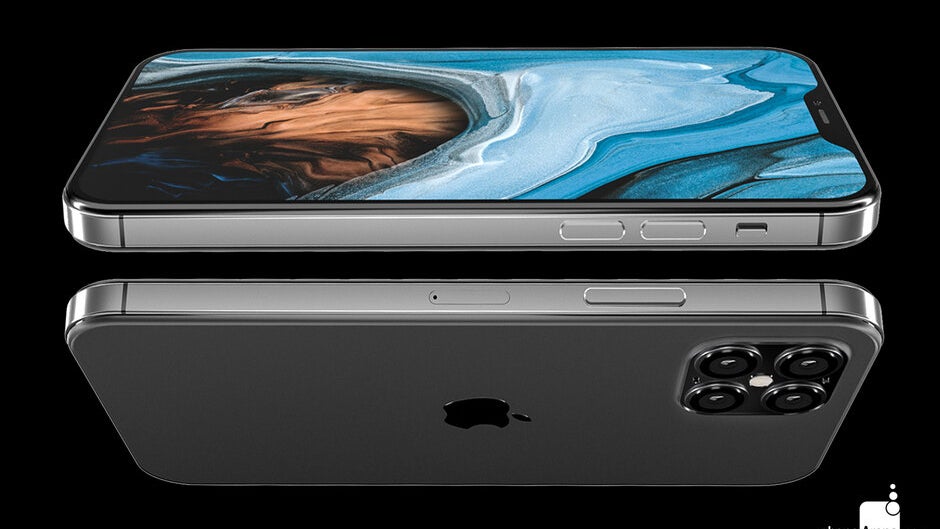UBS says Apple iPhone 12 Pro models will get a 50% boost in memory

TF International's reliable Apple analyst Ming-Chi Kuo expects Apple to release four AMOLED screened handsets this fall. These models include the 5.4-inch iPhone 12, the 6.1-inch iPhone 12 Plus, the 6.1-inch iPhone 12 Pro and the 6.7-inch iPhone Pro Max. Now if you're wondering what the difference is between the two 6.1-inch models, the difference will be in the configuration options and the rear camera setup.
- iPhone 13: price, release date, features, and specs
This has been seconded by UBS analysts Timothy Arcuri and Munjal Shah. In a research report that was shared with MacRumors, the analysts broke down the 2020 AMOLED iPhone models like this:
| Model | Camera setup | Memory |
|---|---|---|
| Apple iPhone 12 Pro Max 6.7-inch display | Wide, Telephoto, Ultra-wide, 3D Sensing (ToF) | 6GB RAM |
| Apple iPhone 12 Pro 6.1-inch display | Wide, Telephoto, Ultra-wide, 3D Sensing (ToF) | 6GB RAM |
| Apple iPhone 12 Plus 6.1-inch display | Wide, Ultra-wide | 4GB RAM |
| Apple iPhone 12 5.4-inch display | Wide, Ultra-wide | 4GB RAM |
With several analysts in agreement, the above lineup appears to be what iPhone fans have to look forward to in September. And despite earlier speculation, Kuo says that all of these models will launch this year with support for both sub-6GHz and mmWave 5G signals. That contradicts a report issued last week by trading firm Susquehanna International. The securities house told its clients not to expect the models that support mmWave 5G signals until 2021. While sub-6GHz spectrum travels farther and penetrates buildings better, ultra-high-band mmWave spectrum delivers faster download data speeds and can carry more traffic.
The iPhone 12 Pro models will enjoy a 50% hike in memory
The chart also shows that the UBS analysts expect the two "Pro" models to sport 6GB of memory this year. If the figure proves true, it will represent a 50% hike from the 4GB of RAM seen on all three 2019 models. If you're wondering why the 2020 iPhone 12 Pro models will still carry half the amount of RAM as the Samsung Galaxy S20 series is rumored to have, it is due to a difference in how iOS and Android handle RAM when an app is closed. Android uses Java and when an app is closed, the memory that was tied up by the app must go through a process known as Garbage Collection (GC). With Android, RAM freed up by a closed app is "cleaned" before it is ready to be used by another app. But this GC process requires extra RAM.

Render of the rear camera setup for the iPhone 12 Pro
With iOS, RAM released when an app is closed is immediately ready for use by another app. Thus, there is no GC on iOS and no need for as much RAM. While Android uses Java to make it easier for multiple manufacturers to develop Android phones, iOS doesn't have this problem because the same company that developed the software also designed and manufactured the phone it runs on. Thus, iOS is written in C.
The 2020 AMOLED iPhone models will all be powered by the A14 Bionic SoC. This chipset will be manufactured by TSMC using its 5nm process node. The foundry is going to be shipping 5nm chips during the second half of this year. The lower the process node, the higher the number of transistors that can be packed into an integrated circuit; more transistors inside lead to a more powerful and energy-efficient chip. So the A14 Bionic should show a nice increase in performance and battery life compared to the 7nm A13 Bionic.
Apple is also expected to repeat something this year that caught the public's attention last year. The 2020 iPhones will reportedly have their battery capacities increased again by a decent amount. One rumor that we don't see coming true this year is the one that calls for Apple to retire Face ID and the notch on the iPhone 12 Pro units and replace them with an under-display fingerprint scanner. It is more likely that we will see that design change in September 2021.
Follow us on Google News










![A new Android bug is making it impossible to install new apps. Are you affected? [UPDATE]](https://m-cdn.phonearena.com/images/article/176703-wide-two_350/A-new-Android-bug-is-making-it-impossible-to-install-new-apps.-Are-you-affected-UPDATE.webp)

Things that are NOT allowed:
To help keep our community safe and free from spam, we apply temporary limits to newly created accounts: